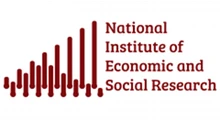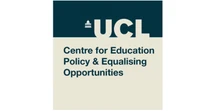People who are refugees typically have worse employment prospects than the rest of the population, including other migrant groups. Targeted policies can help: speeding up application decisions, supporting access to work, improving job matching and providing language and mental health support.
In 2024, just over one million asylum applications were submitted in the European Union (plus Norway and Switzerland), with Germany receiving the highest number (see Figure 1). The main countries of origin of the people making these applications were Syria, Venezuela and Afghanistan. In addition, more than four million people displaced by Russia’s invasion of Ukraine were receiving temporary protection in European countries.
In the UK, 108,000 individuals sought asylum in 2024. The most common nationalities of applicants were Pakistani, Afghan and Iranian – together representing a quarter of people claiming asylum in the UK last year.
Figure 1: total asylum applications to the EU, by country (2024)
Source: Eurostat
Many of these applicants are expected to be granted asylum and attain refugee status in their host countries. But once accepted, refugees have worse employment outcomes on average than both the local population and other migrant groups (Ruiz and Vargas-Silva, 2018). Research evidence indicates that they have lower rates of employment, reduced earnings and greater job insecurity.
Understanding which policies can enhance the integration of refugees into the labour market is crucial for several reasons. First, countries have international obligations to protect people who are fleeing violence and persecution.
Second, while some refugees may eventually return to their home countries, the majority are likely to settle permanently in their host countries. As such, policies that support better employment outcomes offer long-term benefits for both the individuals themselves and for society more broadly.
This article outlines key policies that could improve refugees’ labour market outcomes in high-income countries, and the rationale and evidence behind each. These include:
- Reducing waiting times for asylum decisions.
- Enabling early access to the labour market.
- Using strategic matching with local areas.
- Providing bespoke job search assistance.
- Offering mental health support.
- Delivering targeted language training.
Reducing waiting times for asylum decisions
Many refugees endure prolonged delays before receiving a decision on their asylum applications (see Figure 2). As of December 2024, 31% of pending cases in the UK had been awaiting an initial decision for over 12 months.
Figure 2: number of UK asylum applications by wait time, 1989 to 2024
Source: Migration Observatory analysis of Home Office Immigration Statistics
During this period, asylum seekers are often left in legal limbo. They are permitted to remain in the host country but subject to strict limitations on their activities and unable to plan for the long term. This period of uncertainty can have serious consequences for refugees’ mental health and diminish their motivation to engage in the labour market once they are granted status.
One study investigates the impact of waiting times on employment outcomes using registry panel data from Switzerland, covering 17,360 asylum applicants (Hainmueller et al, 2016). The analysis finds that each additional year spent waiting for a decision reduces the probability of being employed one year after receiving refugee status by four to five percentage points. This decline is particularly significant given refugees’ already low employment rates (see Figure 3).
Figure 3: effect of 1-year increase in asylum wait time on probability of subsequent employment
Source: Hainmueller et al
Note: Point estimates (line) and 95% confidence intervals (grey ribbon) for the effect of a 1-year increase in the asylum wait time on the probability of subsequent employment depending on how many months a refugee has already waited for his or her asylum decision (n = 17,360) are shown. Effect estimates based on locally weighted kernel regressions with Epanechnikov kernel (bandwidth, 2). Regressions control for gender, age, and fixed effects for week of entry, origin, quarter of residency, religion, ethnicity, and canton. pp, percentage point.
Enabling early access to the labour market
Many countries impose temporary employment restrictions that prevent those seeking asylum from working during the application process or which limit the types of jobs that they can take. In the UK, for example, asylum seekers are generally not allowed to work, except in limited cases, such as when an applicant has been waiting more than 12 months for an initial decision.
In cases where there are long waiting times for an asylum decision, these employment restrictions can have ‘scarring effects’. This means that in addition to a short-term lack of access to work income, the restrictions can have a much longer-lasting impact, including the erosion of skills over time.
Several studies provide evidence of scarring effects. One uses data from European countries to show that exposure to an initial ban on working reduces refugee employment in subsequent years by 15% (Fasani et al, 2021). The reduction is driven by lower labour market participation.
Using strategic matching with local areas
Refugees are often assigned to locations across a country that are primarily based on the availability of housing. Unsurprisingly, areas with more available housing tend to be more deprived, offer fewer employment opportunities and are often distant from people from the same ethnic background who could provide employment support.
There is significant potential in adopting a strategic approach to the allocation of refugees across a country – one that matches refugee characteristics with the specific needs and resources of local areas. For example, refugees’ prior work experience, educational background and potential for retraining could be aligned with regional labour market demands and the availability of educational or vocational training facilities.
Research in this area combines machine learning and matching theory to improve the pairing of refugees with local communities. For example, researchers have developed software to help resettlement agencies to make data-driven, optimised placement decisions (Ahani et al, 2021). This tool was created in close collaboration with HIAS, a US-based resettlement agency operating across 22 countries.
At HIAS – as in many resettlement organisations worldwide – the allocation of refugees to communities was typically done manually. This approach can be inefficient and may limit the ability to align refugees’ profiles with the characteristics and opportunities of local areas. The researchers estimate that had their software been used in 2017, it could have increased employment among refugees resettled by HIAS by up to 38%.
Providing bespoke job search assistance
Refugees often arrive with limited knowledge of their host country’s labour market. They can also face difficulties in validating their qualifications and they may have little access to social or professional networks.
As a result, standard job search assistance programmes – those that are effective for local populations or even other migrant groups – may be less effective for refugees. Instead, this group requires tailored support that takes account of their specific challenges and needs.
Researchers have partnered with a non-governmental organisation (NGO) in Germany to evaluate the impact of enhanced job search assistance and employer matching on the employment outcomes of recently arrived refugees (Battisti et al, 2019). After 12 months, refugees with lower levels of education who received this targeted support were 16 percentage points more likely to be employed than those who did not.
The study also assessed the cost-effectiveness of the programme, comparing the additional staff time required to the fiscal benefits of higher tax contributions and reduced welfare payments. The researchers estimate that the programme could generate an additional €104,000 in government revenue in a 12-month period.
Offering mental health support
Refugees have often experienced traumatic events that can have lasting effects on their mental health and, in turn, undermine their ability to seek and maintain employment. While the prevalence of mental health challenges among refugees is well documented, there is relatively limited evidence on interventions that address both mental health and labour market outcomes together.
This gap is increasingly acknowledged in the evidence base, and some emerging studies have begun to explore integrated approaches. One estimates that after adjusting for socio-demographic differences, individuals who migrated to the UK for asylum reasons are four percentage points more likely to report mental health conditions than other groups (Giuntella et al, 2018).
Although more research is needed, early findings suggest that combining mental health support with employment services could hold promise for improving both wellbeing and economic integration among refugees.
Delivering targeted language training
Many refugees are not fluent in the language of their host country, which can limit the number and types of jobs available to them. Many jobs require at least a basic level of the host country’s language. Refugees may have relevant qualifications or work experience, but without the language skills to communicate those competences, they are often underemployed or pushed into low-skilled, low-paying jobs.
Research has investigated the random allocation of asylum seekers across Switzerland, where individuals are placed in regions with varying dominant languages (Auer, 2018). This setting creates a natural experiment in which similar refugees encounter different degrees of language proximity, while other cultural and economic conditions remain relatively constant.
The study finds that being placed in a region where the refugee speaks the dominant language significantly boosts their employment prospects – specifically, this increases the likelihood of employment within two years by 14%.
Moving forward
There is a risk that refugees may become a strain on host economies, not due to any inherent burden that they pose, but because host countries often fail to create the conditions necessary for their success.
This article has explored evidence showing how early interventions and targeted policy reforms can significantly improve outcomes for refugees in high-income countries. Such initiatives not only support individuals rebuilding their lives after fleeing conflict and persecution, but also foster public trust and long-term social cohesion.
Where can I find out more?
- Refugee outcomes in high-income countries? Policy insights for the UK: report from the Centre on Migration, Policy and Society at the University of Oxford.
- Jobs interventions for refugees and internally displaced persons: report from the World Bank.
- Asylum applications – annual statistics: Eurostat.
- How many people claim asylum in the UK? Home Office statistics.
Who are experts on this question?
- Daniel Auer, Collegio Carlo Alberto
- Michele Battisti, University of Glasgow
- Francesco Fasani, University of Milan
- Jens Hainmueller, Stanford University
- Isabel Ruiz, University of Oxford
- Alexander Teytelboym, University of Oxford
- Carlos Vargas-Silva, University of Oxford









































